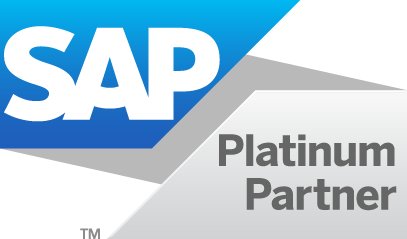“To understand the twenty-first century, you need to understand that the planet’s three largest forces―Moore’s law (technology), the Market (globalization), and Mother Nature (climate change and biodiversity loss)―are accelerating all at once. These accelerations are transforming five key realms: the workplace, politics, geopolitics, ethics, and community.” -Tom Friedman
Could the Internet of Things (IoT) provide a more equitable and sustainable world? Imagine a connected world where cities could anticipate their needs for power and water, connected cars, machines which notify you when they need replacements… This world may be coming sooner than you think with SAP Leonardo as it gives you the ability to develop new business models and add new technologies as they emerge.
So, what exactly is SAP Leonardo?
As Mike Flannagan, senior vice president of analytics at SAP, said: “Leonardo is about finding generalized common business problems across an industry, then defining the elements of a methodology, the technologies used to solve that problem and package those up and make them available as an accelerator for the next customer”
To do so the idea is to connect smart devices with people and processes to accelerate time to value.
Let’s put this in context
Executives feel increasing pressure to innovate and to create a digital business. The technology is available, but it’s hard to know which technology will solve these challenges. The objective of SAP Leonardo is to work together with the customer to co-innovate, bringing their technology expertise and a design-led approach to tackle their biggest business challenges. Moreover, the particularity of SAP Leonardo is that design thinking drives the whole process. This explain how SAP Leonardo can help customers to innovate quickly.
Let’s get a little bit deeper: What allows SAP Leonardo system to work?
Several components contribute to the well processing of SAP Leonardo. The combination of those elements enables the system to be efficient, to connect people, products, assets, and allow companies to develop new business models.
Design thinking
The SAP Leonardo process starts with Design thinking, which relies on feasibility (the technology factors), viability (the business factors), and desirability (the human factors). By focusing on these aspects it’s possible to create opportunities to innovate and solve a problem that satisfies needs
Tools
SAP Leonardo is based on different tools:
- SAP Build: to create prototypesand collect user feedback through design studies.
- SAP Fiori: design language to create simple, responsive, and delightful user experiences when they create a solution.
- design experts: to make sure the user interface help solve a business challengethrough what it calls “Design Gates”.
Process
The Leonardo design-led development process is made up of four phases: Explore, Discover, Design and Prototype, and Deliver (and checkpoints along the way between phases: Design Gates or D-Gates)
- Every customer engagement goes through the Explore phase to identify the use case to investigate in the Leonardo process.
- Once the use case has been identified, the project can go in two potential tracks: express or open innovation.
- Open innovation, is a little bit more in-depth, where you do some deep user research and maybe build the prototype from scratch versus using something pre-made.
- The express engagement really ties in these accelerators. The accelerators are fixed price bundles of expertise, software, and design services that are used to deliver proof of concepts much faster than open innovation engagements. What’s great about these is you already have an example prototype set up, you also have some example personas that can be used to validate with the customer, so you are able to go through this design process and deliver a proof of concept much faster than it would be otherwise.
- Now if you don’t have a use case that fits into an accelerator, it will become an open innovation project.
In other word what does this mean for you and your business?
SAP technologies aim to change the way businesses work, by simplifying employees’ everyday lives and enabling to exponentially grow business activities.
To understand SAP Leonardo applications more concretely: let’s look at the warehouse case.
“We have quite a few use cases where autonomous guided vehicles are used in warehouses in combination with EWM. For example, in the SAP warehouse in Walldorf,” says Hero, responsible for Supply Chain Development at SAP.
Hernández, of the Silicon Valley startup Fetch Robotics, adds that orders are now geolocalized within the warehouse. By making use of the business intelligence provided by the SAP EWM, the robot goes straight to the next pick or the packing destination without any human intervention. Pickers can now be more efficient since they do not waste time on the transport after they have pulled an item from the shelf.
According to Hernández: “For me it’s to remove those dull tasks that nobody wants to do. His vision is to keep up with human needs and remove tasks that do not need their intellect. “Maybe removing the risk of driving a fork lift and instead let a robot take care of that.”
As another example, SAP Leonardo can help companies innovate faster by enabling them to try out their ideas before investing too much time and effort. With the BUILD technology, a social platform, businesses can easily create prototypes and share them to collect feedback and suggestions to improve your products.
Finally, SAP Leonardo for the Internet of Things provides a scalable process for manufacturers to collaborate with 3D printing companies and service. This application has been an immediate success with more than 45 participating customers and service providers, including UPS.
“As 3D printing technology advances beyond prototyping, more companies are rethinking their manufacturing and supply networks to meet changing customer expectations,” said Dr. Tanja Rueckert, executive vice president, SAP. “We are now delivering a solution for manufacturers to have a standard and scalable business process to intelligently manage design, pricing, and logistics decisions in a collaborative network.”
The SAP Leonardo platform has been enhanced to include new accelerators for the IoT and organizations in order to extend innovation and enable them to become digital businesses.
Applications
One or more SAP Leonardo applications can be used depending on the requirements of the organization. (Connected Goods, connected assets and connected vehicles)
CONNECTED GOODS
The endeavor here is to control a large range of customer facing IoT products such as vending machines or freezers using SAP Connected Goods in order to maximize the value of these consumers. Connecting IoT devices with organizational processes allows you to increase capacity and operate faster. This enables a boost of demand and gives a larger access to information for the business and its customers.
CONNECTED ASSET
This application permits to increase asset effectiveness across businesses by linking assets to production systems with maintenance business processes for better service and maintenance processes while limiting cost.
CONNECTED VEHICLES
In many ways, the advantage that the IoT brings to the mill products and mining industries is more than just creating and storing data. It’s about having access to that data in real time. It’s about empowering decision makers with accurate, actionable, and instant information they need to take the perfect step at the perfect time.
Mill products companies can collect, map, store, and analyze fleet and vehicle data at a moment’s notice. This can be used for everything from performing a driver safety analysis to reducing accidents. It can help organizations keep track of ever-changing rules and regulations, minimizing compliance issues.
However, the most important benefit of all is connecting your entire fleet together in a rich and meaningful way. At that point, a fleet becomes less the sum of a series of disparate parts spread out across the globe and more a living, breathing whole.
SAP Leonardo: A masterpiece in the making
Businesses are continually searching for innovative ways to provide services like no other competitor.
As SAP explained: “The massive numbers of connected things and the explosion of data generated by connected devices (“Things”) will change the way we do business forever. The journey a company takes to get from “Things to Outcomes” is becoming the catalyst for digitization.” (2017)
However, even if most companies are aware that digital transformations are a key for survival, only 3% became leaders by completing digital transformations projects across their organization.
SAP wants to propose a simplest way to businesses to apply these emerging digital technologies like the Internet of Things (IoT), artificial intelligence, machine learning, blockchain, advanced analytics and big data. In this way, SAP has expanded Leonardo platform to help create new business models, redefine business processes and create new working environments in order to increase profitability.
Bye bye from SAP Leonardo Live

















